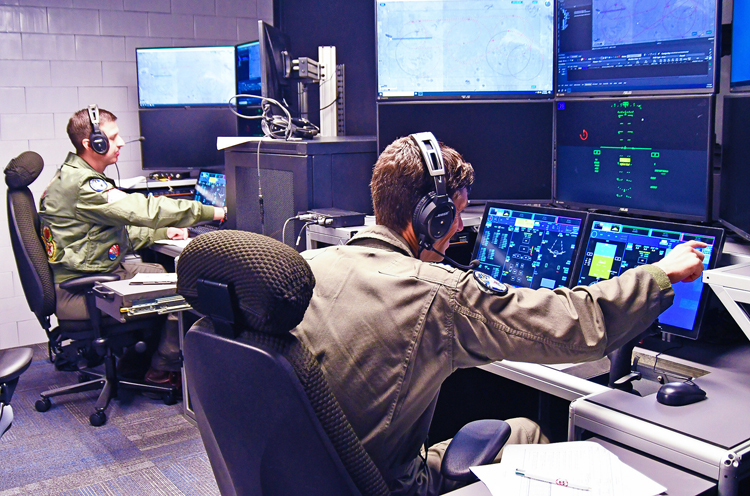INDIAN ARMED FORCES CHIEFS ON OUR RELENTLESS AND FOCUSED PUBLISHING EFFORTS

The insightful articles, inspiring narrations and analytical perspectives presented by the Editorial Team, establish an alluring connect with the reader. My compliments and best wishes to SP Guide Publications.

"Over the past 60 years, the growth of SP Guide Publications has mirrored the rising stature of Indian Navy. Its well-researched and informative magazines on Defence and Aerospace sector have served to shape an educated opinion of our military personnel, policy makers and the public alike. I wish SP's Publication team continued success, fair winds and following seas in all future endeavour!"

Since, its inception in 1964, SP Guide Publications has consistently demonstrated commitment to high-quality journalism in the aerospace and defence sectors, earning a well-deserved reputation as Asia's largest media house in this domain. I wish SP Guide Publications continued success in its pursuit of excellence.
- Prime Minister Modi Visits Punjab’s Adampur Air Base, Interacts with Airmen after Successful ‘Operation Sindoor’; Stern Message to Pakistan
- The layered Air Defence systems that worked superbly, the key element of Operation Sindoor
- Operation Sindoor | Day 2 DGMOs Briefing
- Operation Sindoor: India strikes back with Precision and Purpose
- Operation Sindoor: Resolute yet Restrained
- India’s Operation Sindoor Sends a Clear Message to Terror and the World – ‘ZERO TOLERANCE’
- Japan and India set forth a defence cooperation consultancy framework, talks on tank and jet engines
- Terrorist Attack in Pahalgam in Kashmir: Unfolding a long surgical war against PAK
- Lt General Pratik Sharma takes over Command of Indian Army's Northern Command
US Navy and Lockheed Martin Skunk Works® Demonstrate First Live Control of an Uncrewed Air Vehicle by UMCS and MDCX™

Lockheed Martin collaborated with the US Navy and General Atomics (GA) in a first-ever live control flight demonstration of an uncrewed system by the Unmanned Carrier Aviation Mission Control Station (UMCS).
Powered by the Skunk Works® MDCX™ autonomy platform, the UMCS controlled a GA MQ-20 Avenger uncrewed air system (UAS) as it completed a live fly mission. This demonstration is a pathfinder that helps to advance the complex technology necessary to enable crewed and uncrewed teaming as envisioned for programs such as CCA and others.
The flight test is a significant milestone in the development of UMCS, setting the stage for the Navy's future unmanned aviation operations.
MDCX™ enabled the US Navy Air Vehicle Pilots at Patuxent River, Maryland to control the MQ-20 during its flight in California.
"Skunk Works is proud to collaborate with the Navy to bring its Carrier Air Wing of the Future vision to life," said John Clark, vice president and general manager, Lockheed Martin Skunk Works. "The MDCX made it possible to rapidly integrate the MQ-20 'autonomy core' with the UMCS, demonstrating common control capability and third-party platform integration."
"Autonomous collaborative platforms that are mission capable with technologies that have been demonstrated at high readiness levels and the maturation of those technologies is just one of the focus areas for GA-ASI," said GA-ASI President David R. Alexander. "This collaboration with the USN and Lockheed Martin advances the UMCS's beyond line-of-sight capabilities, while demonstrating the maturity of our Tactical Autonomy Core Ecosystem (TacACE)."
"This was a huge step for unmanned naval aviation," said Lt. Steven Wilster, MQ-25 AVP. "This demo showcased UMCS's first live control of an unmanned air vehicle, and it was great to be part of history in the making. The team is paving the way for integrating critical unmanned capability across the joint force to combat the high-end threat our warfighters face today and in the future."
The US Navy, Air Force, and Marine Corps are collaborating via a Tri-Service Memorandum of Understanding on critical sub-systems for CCA platforms. The Navy leads the US Department of Defense in developing a common control architecture and ground control station (GCS) for these systems. This work is being done in collaboration with Lockheed Martin Skunk Works, leveraging decades of operational experience delivering GCSs underpinned by the US government's Open Mission Systems architecture for third-party platform integration for optimal interoperability.
The Navy will refine UMCS's requirements based on data from this demonstration and conduct further flight tests to advance command and control technologies, autonomy and crewed-uncrewed teaming.





